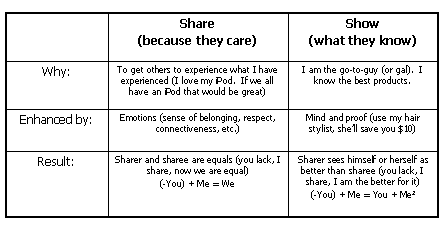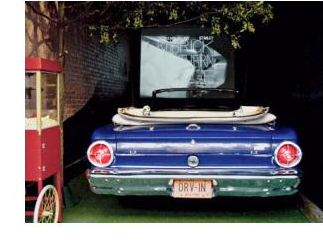Good Friday to ya’ll. Things have been a little busy as of late, so I going green and recycling a post from last year. But don’t worry; it’s very timely. In this episode of Seinfeld on Marketing, George is lamenting to Jerry about how his life has turned out thus far:
GEORGE: Why did it all turn out like this for me? I had so much promise. I was personable, I was bright. Oh, maybe not academically speaking, but … I was perceptive. I always know when someone’s uncomfortable at a party. It became very clear to me sitting out there today, that every decision I’ve ever made, in my entire life, has been wrong. My life is the opposite of everything I want it to be. Every instinct I have, in every aspect of life, be it something to wear, something to eat … It’s all been wrong.
JERRY: If every instinct you have is wrong, then the opposite would have to be right.
Doing the opposite really worked for George. He met a woman and got a job with the New York Yankees. If George can benefit from doing the opposite, I’m fairly certain that you can too. Let’s take a common scene you may encounter this weekend.
Springtime in the US– A time for baseball, time spent outdoors and of course Easter egg hunts. We can learn a lot about business by watching children during an Easter egg hunt.
Remember as a kid when participated in Easter egg hunts? You heard the magical word “go!” and your heart raced as you headed for the middle of the lawn where the eggs were easily seen.
However, since most of the other kids also gravitated toward the middle of the lawn, you were often met with sharp elbows, pushing and shoving and other scenes that were better left for WrestleMania. If you were a bigger kid or a bully (heaven forbid!) you did quite well in the middle. However, most kids that headed for the middle of the lawn came away with little or nothing at all because the competition in the middle was fierce.
Contrast this to the children who went for the boundaries of the lawn. They often found little or no competition. They were left to themselves to grab the hidden gems in the cool grass at the edges of the lawn.
Your market is like a large Easter egg hunt -most companies fight for the middle of the market, the mass market. The middle looks very tempting because of its size. However, there is nothing exciting about the middle. The middle of your market often only contains homogeneous, morphed products or services that try (unsuccessfully) to be all things to all people. Instead, look to the boundaries (or the extremes) of your market – become über-luxury (Starbucks), über-inexpensive (Wal-Mart), über-fast (FedEx), über-customer friendly (Nordstrom), über-small (the Mini), über-big (the Hummer) or über-different (Apple).
Whatever you do, just get to the boundaries first and become the best in that category. The boundaries are where the profund products and services can be found getting most of the word of mouth on the playground.
This post is part of a weekly series, Seinfeld on Marketing.
Happy Friday!
Filed under: Business, Marketing, Seinfeld on Marketing, Word of Mouth | 3 Comments »





 One way is to use eye-catching and surprising “marketing” stunts. When these stunts are used, it’s usually not the company that is remembered but the shocking stunt or the funny one liner that is remembered. Think Super Bowl ads. How many times have you heard in the last few weeks about a funny or surprising Super Bowl ad but the person telling you about it cannot remember the company behind the ad? I know that I am getting sick of this. (Side note: I couldn’t even remember the company that paid the lady in the photo to the right $10,000 to tattoo her forehead with their company logo, but luckily I remembered the stunt so I eventually found the photo).
One way is to use eye-catching and surprising “marketing” stunts. When these stunts are used, it’s usually not the company that is remembered but the shocking stunt or the funny one liner that is remembered. Think Super Bowl ads. How many times have you heard in the last few weeks about a funny or surprising Super Bowl ad but the person telling you about it cannot remember the company behind the ad? I know that I am getting sick of this. (Side note: I couldn’t even remember the company that paid the lady in the photo to the right $10,000 to tattoo her forehead with their company logo, but luckily I remembered the stunt so I eventually found the photo).  For
For 